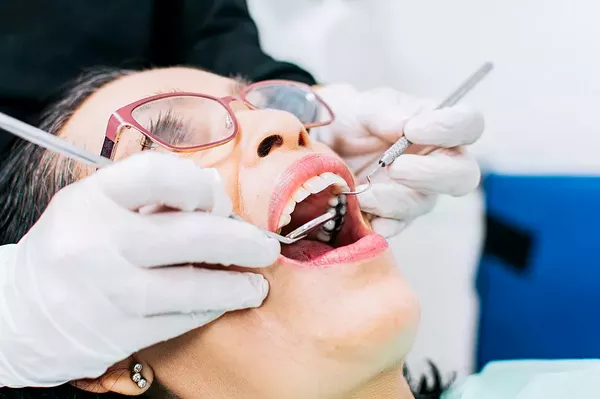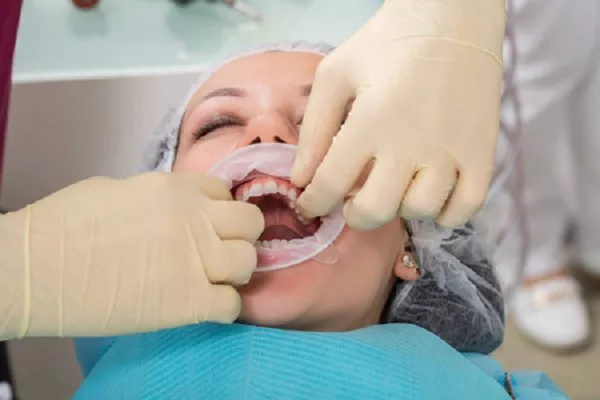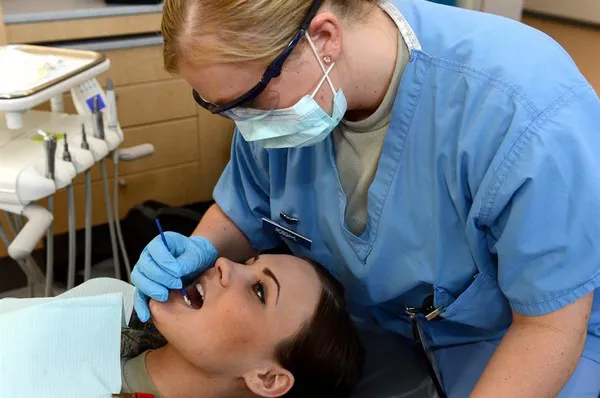Maintaining oral health is a vital aspect of overall well-being, and routine dental cleanings and fillings play a pivotal role in preserving the integrity of our teeth. However, as individuals seek to prioritize their dental care, questions about the costs associated with teeth cleaning and fillings inevitably arise. In this comprehensive article, we will delve into the factors influencing the costs of these dental procedures, explore the various options available, discuss the role of dental insurance, and provide practical tips for managing expenses.
Understanding Teeth Cleaning Costs
Regular teeth cleaning, also known as dental prophylaxis, is a fundamental component of preventive dental care. The goal of teeth cleaning is to remove plaque, tartar, and surface stains, promoting optimal oral health. The costs associated with teeth cleaning can vary based on several factors:
Location and Geographic Variation:
Dental costs often vary based on the geographical location of the dental practice. Urban areas or regions with a higher cost of living may have higher dental fees compared to rural areas. It’s essential to consider regional variations when estimating teeth cleaning expenses.
Dental Practice Type:
The type of dental practice, whether it’s a private practice, community clinic, or a dental school, can influence the cost of teeth cleaning. Community clinics and dental schools may offer more affordable options.
Additional Services:
Teeth cleaning costs may include additional services such as dental examinations, X-rays, or preventive treatments. The inclusion of these services can impact the overall cost of the appointment.
Frequency of Cleanings:
The frequency of teeth cleanings recommended by your dentist can affect the overall cost. While some individuals may require cleanings every six months, others with specific oral health conditions may need more frequent cleanings.
Dental Insurance Coverage:
Dental insurance coverage plays a significant role in determining out-of-pocket costs for teeth cleaning. Some insurance plans cover the entire cost of preventive services, while others may require a co-payment or have limitations on the number of covered cleanings per year.
Inclusion of Fluoride Treatment:
Some dental cleanings may include fluoride treatment as part of preventive care. Fluoride helps strengthen tooth enamel and prevent tooth decay. The inclusion of fluoride treatment can contribute to the overall cost.
Scaling and Root Planing:
In cases of advanced gum disease, scaling and root planing may be necessary. This deep cleaning procedure involves removing tartar from below the gumline. The need for scaling and root planing can increase the cost of the cleaning appointment.
Considering these factors, the cost of a routine teeth cleaning can range from $75 to $200 or more per session, with variations based on the factors mentioned above.
Understanding Filling Costs
Dental fillings are restorative procedures used to treat cavities and restore the structure and function of damaged teeth. The cost of dental fillings is influenced by several factors, and the type of filling material chosen is a primary determinant. Let’s explore the costs associated with different types of dental fillings:
Amalgam Fillings:
Amalgam fillings, often referred to as silver fillings, are a common and cost-effective option. These fillings are made of a mixture of metals, including silver, tin, copper, and mercury. The cost of amalgam fillings is generally lower than tooth-colored alternatives, ranging from $75 to $200 per filling.
Composite Fillings:
Composite fillings are tooth-colored and made of a mixture of plastic and fine glass particles. They are aesthetically pleasing and bond directly to the tooth. However, composite fillings are typically more expensive than amalgam, with costs ranging from $150 to $450 per filling.
Ceramic Fillings:
Ceramic fillings, often made of porcelain, offer both aesthetics and durability. They are resistant to staining and provide a natural appearance. Due to their premium characteristics, ceramic fillings are the most expensive option, with costs ranging from $250 to $4,500 per filling.
Gold Fillings:
Gold fillings are made of gold alloy and are known for their durability and biocompatibility. While they offer strength and longevity, gold fillings are the most expensive option, with costs ranging from $250 to $4,500 per filling.
Additional factors influencing the cost of dental fillings include:
Tooth Location: The location of the tooth requiring a filling can impact the cost. Front teeth may be more visible, leading individuals to opt for tooth-colored fillings for aesthetic reasons.
Size of the Cavity: The size and severity of the cavity being treated can affect the cost. Larger cavities may require more material and time to restore, potentially increasing the overall cost.
Dentist’s Expertise: The expertise and experience of the dentist performing the filling procedure can influence the cost. Highly experienced dentists may charge higher fees for their skills and the quality of their work.
Insurance Coverage: Dental insurance coverage plays a crucial role in determining the out-of-pocket costs for dental fillings. Some insurance plans cover a percentage of the cost, while others may have limitations or exclusions.
Considering these factors, the cost of a dental filling can range from $75 to $4,500 or more per filling, with variations based on the type of filling material and other relevant factors.
Role of Dental Insurance
Dental insurance is a valuable resource for managing the costs of teeth cleaning and fillings. Understanding how dental insurance works and maximizing its benefits is essential for individuals seeking financial assistance for their dental care expenses.
Preventive Services Coverage: Many dental insurance plans fully cover preventive services, including teeth cleanings. Routine cleanings are often considered a fundamental aspect of preventive care, and insurance plans may cover the entire cost or a significant percentage.
Filling Coverage: Dental insurance plans typically cover a percentage of the cost of dental fillings. The coverage percentage may vary based on the type of filling material chosen and the terms of the insurance plan. Amalgam fillings, being less expensive, may have higher coverage compared to more expensive options like ceramic or gold fillings.
Annual Maximums: Dental insurance plans often have annual maximums, limiting the total amount they will pay for covered services in a calendar year. Individuals should be aware of these maximums and plan their dental care accordingly.
Waiting Periods: Some dental insurance plans have waiting periods before certain services, especially major restorative procedures, are covered. It’s essential to be aware of any waiting periods that may apply to dental fillings.
Network Providers: Insurance plans often have a network of preferred providers. Visiting an in-network dentist may result in lower out-of-pocket costs compared to going to an out-of-network provider.
Claim Submission and Pre-Authorization: Understanding the process for submitting claims and obtaining pre-authorization for certain procedures is crucial. Dentists often assist with claim submission, and pre-authorization can provide an estimate of coverage for planned treatments.
Practical Tips for Managing Dental Expenses
Effectively managing dental expenses involves a combination of proactive oral care, understanding insurance benefits, and exploring cost-effective options. Consider the following tips:
Prioritize Preventive Care: Investing in preventive care, including regular teeth cleanings, helps prevent the development of more significant dental issues that may require costly treatments. Prioritizing preventive care is not only beneficial for oral health but also cost-effective in the long run.
Understand Insurance Benefits: Familiarize yourself with the details of your dental insurance plan, including coverage percentages, annual maximums, waiting periods, and network providers. Understanding your benefits empowers you to make informed decisions about your dental care.
Explore Dental Savings Plans: Dental savings plans, also known as dental discount plans, are alternatives to traditional dental insurance. These plans involve paying an annual fee to access discounted rates for various dental procedures, including cleanings and fillings. Dental savings plans can be particularly useful for individuals without dental insurance.
Compare Costs and Obtain Estimates: If cost is a significant consideration, obtain cost estimates from multiple dental offices for the required procedures. Comparing costs allows you to make informed decisions about where to receive dental care.
Consider Community Clinics and Dental Schools: Community clinics and dental schools often offer dental services at reduced rates. While services at dental schools may take longer due to the involvement of students, they can provide cost-effective options for individuals seeking affordable dental care.
Discuss Payment Plans: Some dental offices offer payment plans to help patients manage the cost of treatment. Payment plans involve breaking down the total cost into manageable monthly payments. Discuss payment plan options with the dental office before undergoing treatment.
Maintain Good Oral Hygiene Practices:
Regular brushing, flossing, and routine dental checkups contribute to overall oral health. By maintaining good oral hygiene practices, individuals can reduce the risk of cavities and the need for extensive dental work.
Conclusion
In conclusion, understanding the costs associated with teeth cleaning and fillings is essential for individuals seeking to prioritize their oral health. Factors such as the type of dental procedure, the choice of filling material, dental insurance coverage, and additional services can all influence the overall expenses.
Proactive oral care, preventive measures, and informed decision-making contribute to both optimal oral health and effective management of dental expenses. By leveraging dental insurance benefits, exploring cost-effective options, and maintaining a preventive approach to oral care, individuals can navigate the financial aspect of dental treatments while preserving their bright smiles for years to come.




























